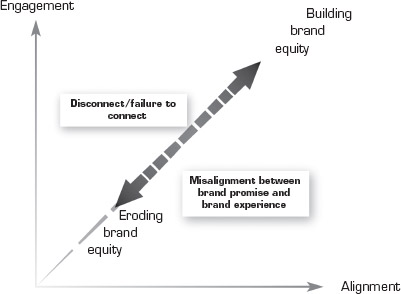CHAPTER 4
PRACTICAL APPLICATIONS – STAKEHOLDER ENGAGEMENT
In Chapter 3, we introduced a framework for how to build connective brands. When applying this framework in practice, brands and businesses are faced with a multitude of different challenges and issues. In Chapters 4 and 5 we will explore some of these in depth.
We will focus on critical success factors, present illustrative examples and case studies, and provide some tools that will be helpful in framing and addressing the issues particular to your own business, brand, and competitive context.
As discussed in Chapter 3, the two key drivers of brand equity in the connective brand framework are (i) the strength of the emotional connection with key stakeholders (engagement), and (ii) the alignment of brand promise and experience across all stakeholder groups. These relate to the elements that define a brand and facilitate its delivery. If a brand fails to connect with key stakeholders and/or fails to align brand promise and brand experience, brand equity will erode (see Figure 4.1).

Figure 4.1 Key issues faced by connective brands
Brand alignment ensures that there is no disconnect between the brand promise and the actual brand experience. Over time, consistent experience of positive interactions with the brand will gradually become increasingly emotional, before turning into brand engagement (see Figure 4.2).
Figure 4.2
Get Connective Branding: Building Brand Equity in a Demanding World now with the O’Reilly learning platform.
O’Reilly members experience books, live events, courses curated by job role, and more from O’Reilly and nearly 200 top publishers.

